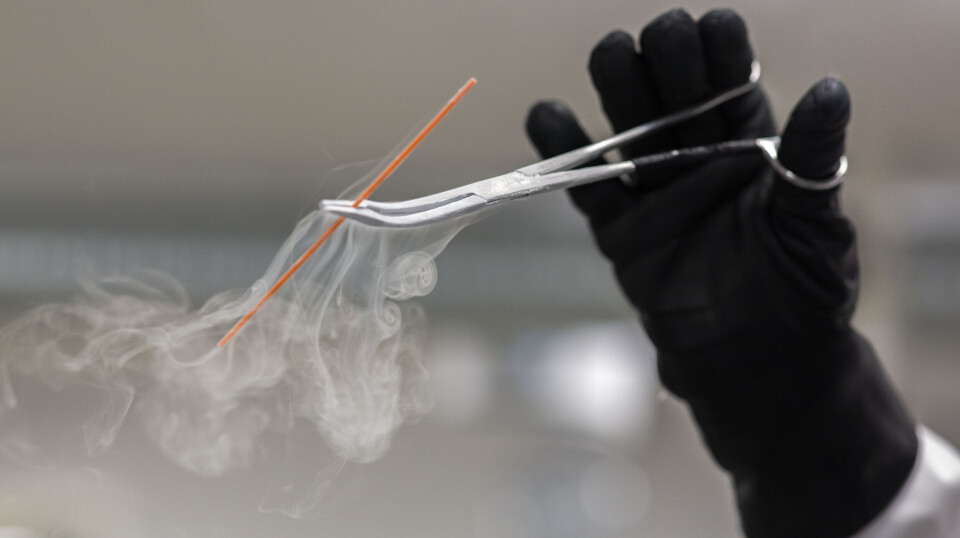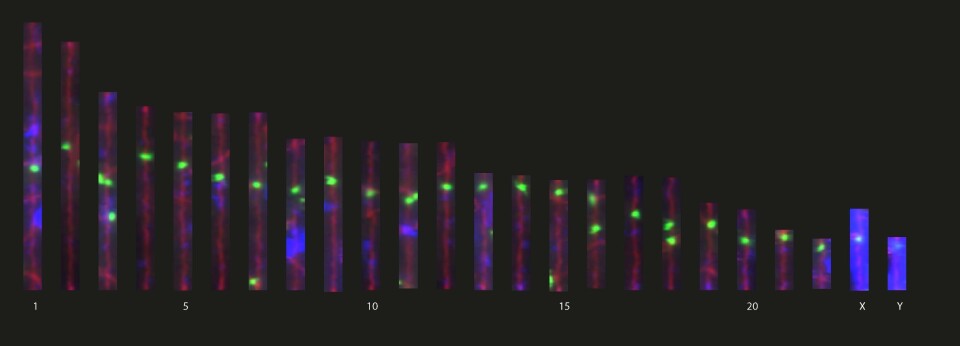THIS CONTENT IS BROUGHT TO YOU BY University of Oslo - read more
Why are many early embryos lost?
New research on mice adds a piece to the puzzle.

Infertility and involuntary childlessness can be very hard for women and couples. It also creates challenges for society. Assisted reproductive technologies such as IVF can help individuals facing fertility challenges.
For couples without such issues, the likelihood of conceiving is about one in four or one in five per cycle.
Data from the Norwegian Institute of Public Health (NIPH) show that roughly one in eight pregnancies ends in miscarriage. The risk is greater in the earliest stages of pregnancy.
Why is this, and what can go wrong during the early stages of pregnancy?
Researchers at the Centre for Embryology and Healthy Development (CRESCO) are trying to find answers. They want to know why many embryos are lost.
In a recent study conducted on mice, researchers looked at how DNA from the mother and father are copied in the early embryo.
“This study is a step forward in understanding the development of early embryos. With more knowledge, we might be able to improve human fertility in the future,” says Mads Lerdrup.
He is a researcher at CRESCO and associate professor at the University of Copenhagen.
Miscarriages often stem from chromosomal errors
The risk of complications is at its peak during the first hours or days after fertilisation.
“These embryos that are lost very early in pregnancy are never implanted in the uterus. They simply don’t manage to get that far in their development. The same issue can arise with embryos fertilised in the lab through IVF,” Lerdrup explains.

One reason this happens is that the DNA in the embryo gets damaged. This can result in too few or too many chromosomes.
“Chromosomal damage in embryos is quite common, leading to their loss. However, we don't yet understand the underlying reasons. This is something that we aim to uncover,” he says.
Early embryonic development
During the initial stages of pregnancy, the embryo develops from a single cell to multiple cells. This happens through a process called cell division. Each time a cell divides, the DNA must be replicated. The DNA contains the genetic codes in the cells.
This process happens constantly and throughout life in the human body.
“This cell division process is usually impressively efficient and error-free. Considering the many trillions of cells in our body, it's remarkable how robust this process is,” says Lerdrup.
During the first cell divisions in the early embryo, however, it is not as straightforward.
“The egg cell and the sperm cell are highly specialised cells within which the DNA is packed up in a very confined space. Hence, the DNA must be unpacked and made accessible. The whole genome undergoes a lot of transitions in this first embryonic cell,” he explains.
Researchers believe that this induces a lot of stress within the embryo.
“You can imagine these as stressful situations taking place at the same time in the early embryo. We know that this is a very special moment in our life cycle,” says Lerdrup.
Maternal and paternal DNA is replicated in different ways
In the new study, the researchers studied the DNA replication patterns in early embryos.
“We discovered differences in the replication mechanisms of maternal and paternal DNA during the initial cell divisions,” says Jason Alexander Halliwell.
He is an associate professor at the University of Copenhagen and first author of the new study.
The study was conducted on embryos from mice. Researchers used advanced methods to analyse the replication patterns of the maternal and paternal genomes in early embryos.
This process occurs in quite similar ways in embryos from humans as in embryos from mice.

In certain regions, maternal DNA replicated much later than paternal DNA. In other regions, maternal DNA replicated first.
“Our study was among the first studies where we were able to see in which part of the genome the DNA is copied first, and in which part of the genome it is copied last,” says Lerdrup.
He adds that it is fascinating that maternal and paternal DNA replication occurs at different speeds.
May improve IVF success rates in the future
The researchers believe that gaining more insight into stress factors in the early embryo could influence how fertility issues are addressed in the future.
“This new knowledge may lead us closer to understanding the potential underlying causes of DNA replication stress and errors leading to the loss of embryos,” says Halliwell, adding:
“Potentially, this could improve success rates of IVF-treatments and reduce developmental defects in the future.”
He underscores the remarkable fact that all human life begins from a single cell.
“What we're really studying is the process of how an embryo goes from one cell to trillions of cells that are within the human body. We want to understand the basic processes that are required to do that and why it often goes wrong at the earliest stages,” he says.
Reference:
Jaseon A. Halliwell et.al.: Sex-specific DNA-replication in the early mammalian embryo. Nature Communcations, 2024. Doi.org/10.1038/s41467-024-50727-w

This content is paid for and presented by the University of Oslo
This content is created by the University of Oslo's communication staff, who use this platform to communicate science and share results from research with the public. The University of Oslo is one of more than 80 owners of ScienceNorway.no. Read more here.
More content from the University of Oslo:
-
A researcher has listened to 480 versions of Hitler's favourite music. This is what he found
-
Researcher: "AI weakens our judgement"
-
New, worrying trend among incels, according to researcher
-
Ship’s logs have shaped our understanding of the sea
-
New study: The dilemma of copyright in the Global South
-
How your lifestyle affects your risk of bowel cancer




































